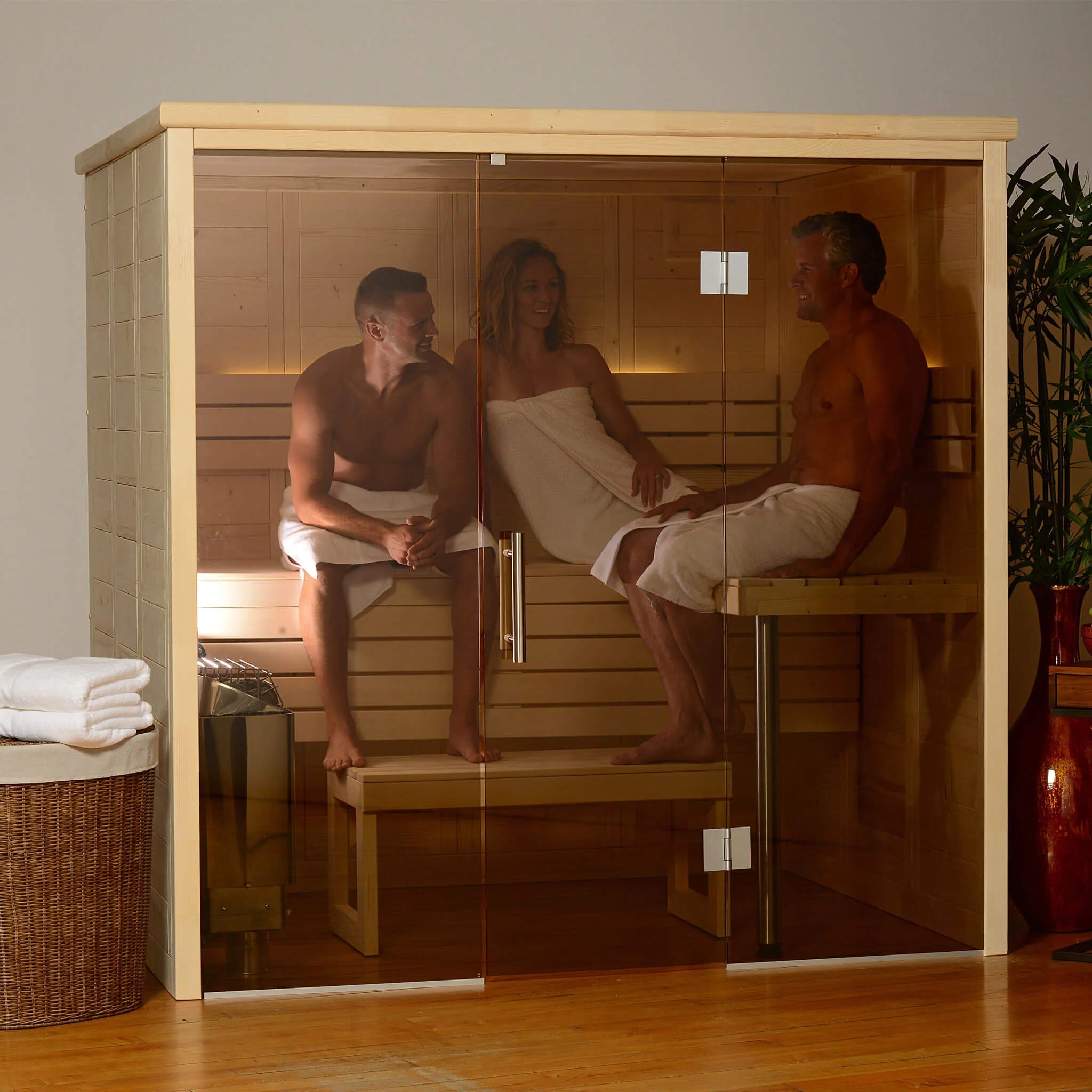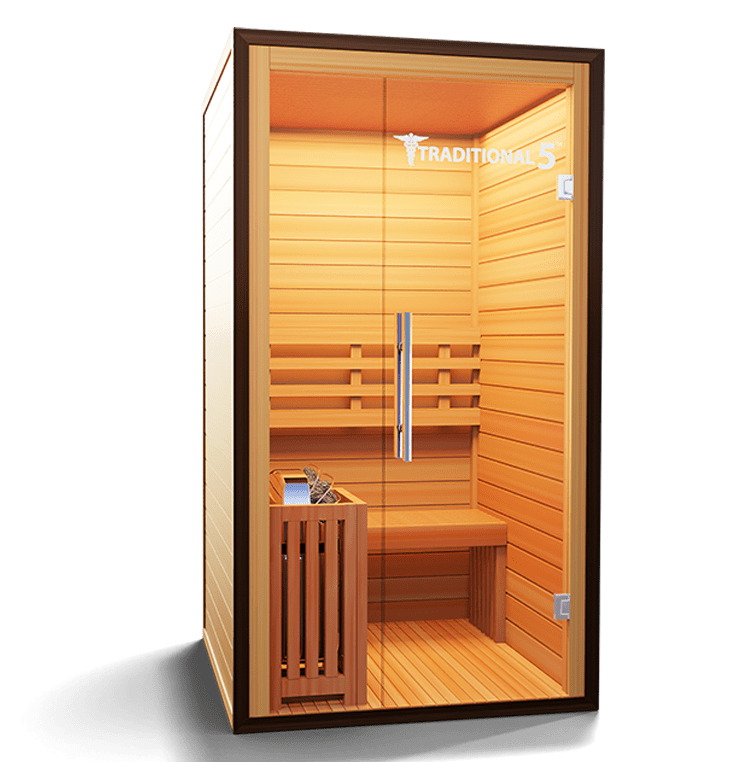Some Of Traditional Sauna
Some Of Traditional Sauna
Blog Article
The Only Guide for Traditional Sauna
Table of ContentsThe Of Traditional SaunaRumored Buzz on Traditional SaunaGetting The Traditional Sauna To WorkHow Traditional Sauna can Save You Time, Stress, and Money.Some Known Factual Statements About Traditional Sauna
A lot of the weight shed in a sauna is water loss and is re-gained upon rehydrating. Nevertheless, undeniably sauna can be a fundamental part of a healthy weight reduction program. To consider the distinctions in between traditional and IR saunas, I will certainly separate these right into proven, academic, and produced differences.Thus, the most popular point in the saunawhich goes to the ceiling directly over the sauna heateris typically between 185 and 190 F. Claims that a traditional sauna surpasses 200 F is just not true and not appropriate for electrical saunas marketed in the United States. The temperature level for a far-infrared sauna is generally established in between 120 and 140 F; nonetheless, unlike the standard sauna, the goal in and IR room is not to accomplish a heat.

When a conventional sauna has been properly warmed, the sauna walls are cozy, the air temperature level has attained set temperature level and the rocks are extremely warmed. As an interesting side note, the warmed walls and the rocks are discharging far-infrared warm, combined with the heated air, to develop an "enveloping heat".
Our Traditional Sauna Diaries
When the heat is achieved, the aspects cycle on and off to maintain the heat. The majority of typical sauna users take pleasure in putting water over the rocks to create heavy steam to elevate sauna humidity levels. The benefits of pouring water over the rocks consist of: making the area more comfortable, dampening the nasal passages, and enabling the use of aromatherapy by blending crucial oils with the water.

When the power enters the body, it causes the body temperature level to increase and ultimately results in sweating. In an infrared sauna it's crucial for the emitters/heaters to stay on nearly continuously. Because there is no mass of rocks to maintain warm, the sauna will cool if the emitters turned off.
Getting The Traditional Sauna To Work
As pointed out over, the sauna bather in an infrared area wants to position himself in Click This Link front of running emitters to get optimal gain from the warmth. The home heating time for the two areas can be extremely different, depending on just how the spaces are used. For a typical sauna, a bather must enable 30-40 mins for the space to attain a preferred temperature and to effectively pre-heat the rocks.

A well constructed sauna will commonly attain a temperature level of 150-160 F in about 30-40 mins (Traditional Sauna). For hotter temperature levels, the area may require to warm for a longer period. As soon as the space accomplishes established temperature level, the heater will cycle on and off, commonly read running regarding 50% of the time. The insulated wall surfaces and the warmed rocks will certainly maintain the area hot and at secure temperature levels.
To some, 15 mins was "squandered" while the infrared energy heated up the timber panels instead of heating up a body, while others find a pre-heated space to be extra comfortable and believe an elevated starting temperature level is needed to start sweating. The length of advised use for every room is approximately the same (10-15 minutes per session); however, because of the lower air temperature levels and the ability to feel the effects of infrared warmth faster than a traditional sauna, it is not uncommon for an individual to invest an overall of 20-30 minutes in an infrared sauna.
Rumored Buzz on Traditional Sauna

The ordinary expense per kWH of electrical power in the united state is approximately $0.11, so a 4.5 kW heater will certainly set you back approximately $.50 to run for one hour, if the heating system runs continually for one hour. Normally a sauna heating system will compete 75% of the initial hour and 50% of succeeding hours on because the elements cycle once the established temperature is achieved.
A 2 person far-infrared area is normally literally smaller sized than a conventional sauna, typically about 4' x 4' or smaller. The IR heating system is typically 1.5-1.7 kW utilizing a 120 volt 15 amp plug-in service. Since the room can be utilized quicker than a sauna area, we will assume the room is used for to of an hour consisting of warm up time.
There is a hardly ever gone over difference in the social experience between the two spaces. While our culture has actually shed several of the social benefit of the conventional sauna experience, it can be extremely socially rewarding (Traditional Sauna). From family members time in the sauna, to heart-felt discussions with better see this halves, to sauna partiesthe typical sauna experience can lead to intimate socializing
Some Of Traditional Sauna
A lot of greater end infrared rooms consist of tinted light therapy, sound systems and full-glass fronts.
Report this page